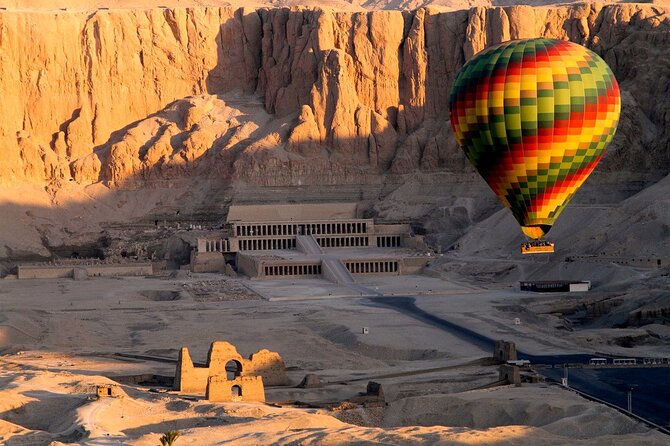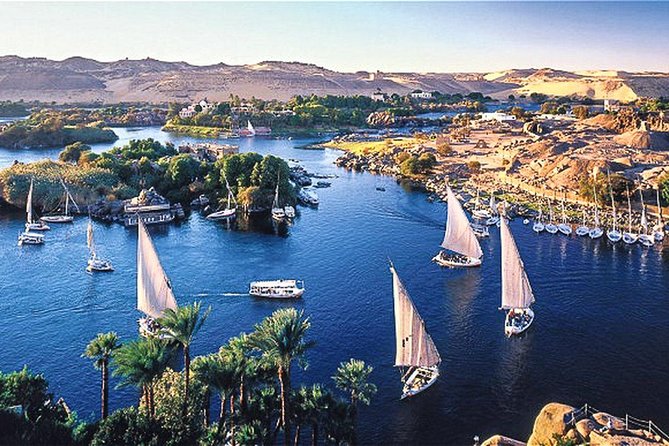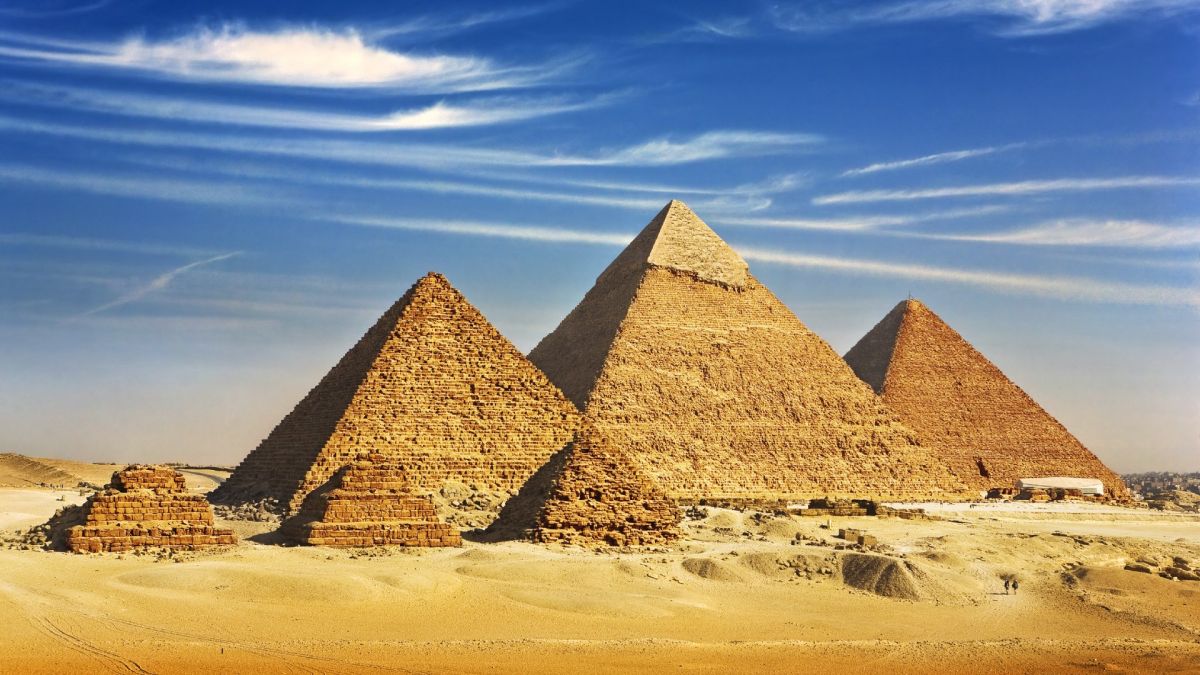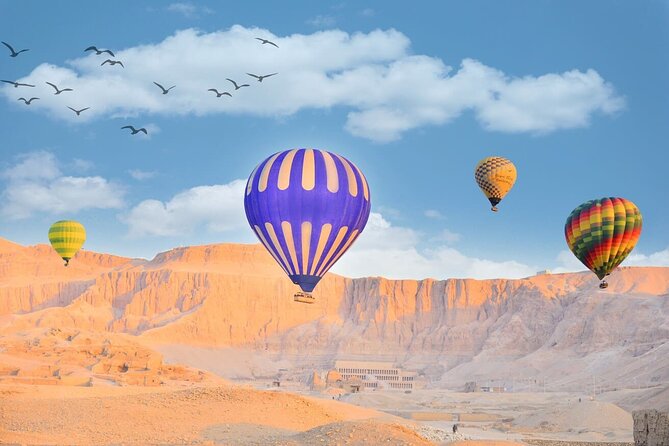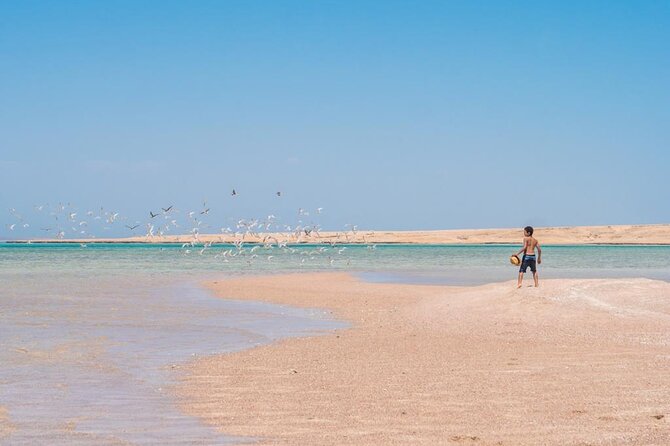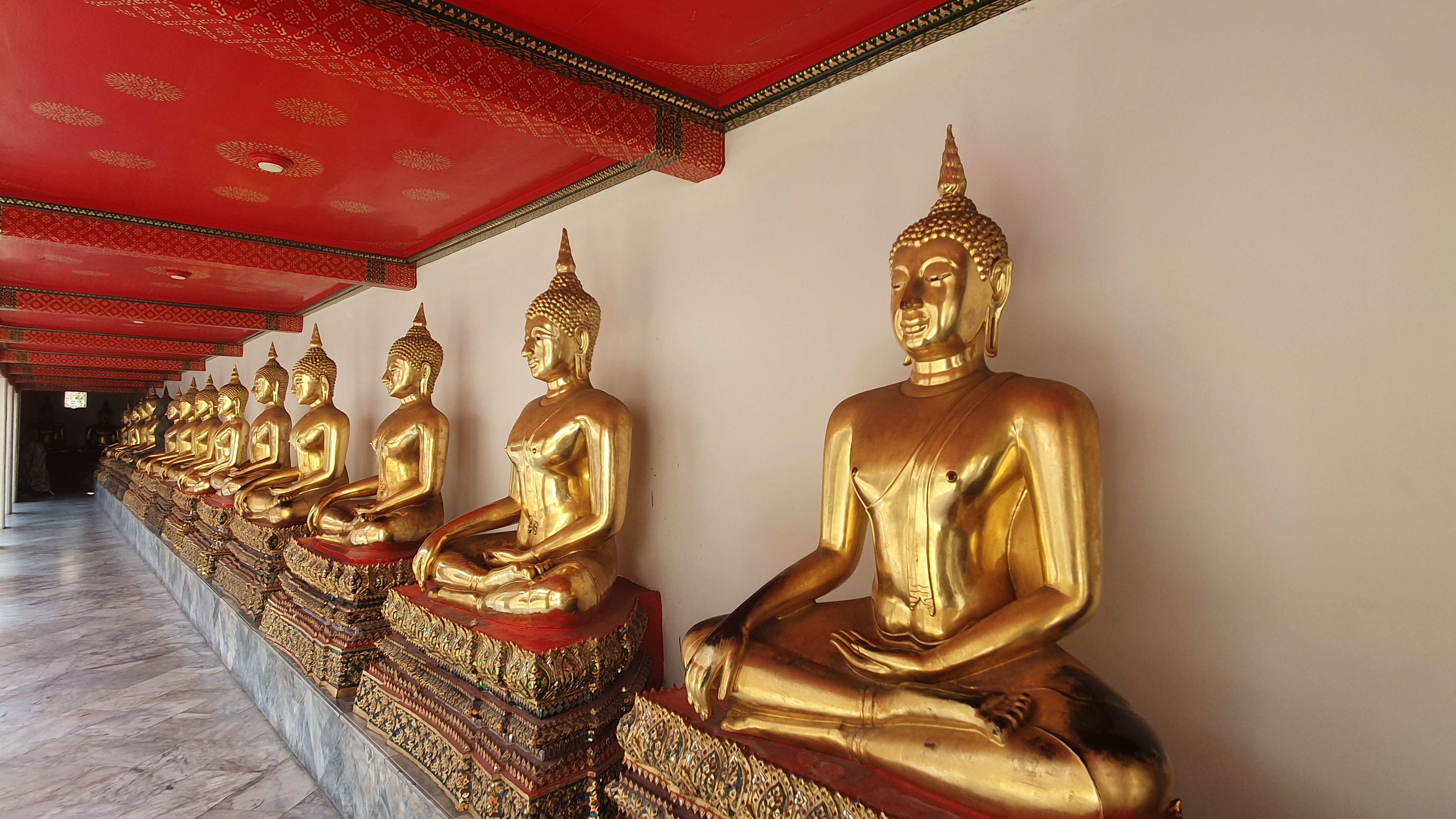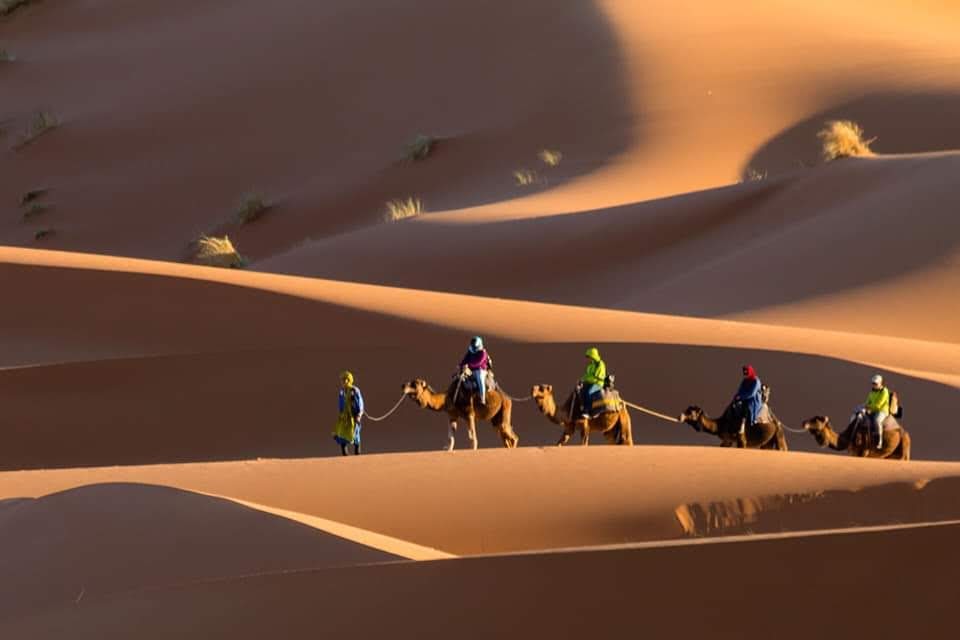Egypt is not subtle. It’s the kind of place that casually drops 4,500-year-old pyramids on the skyline, invites you to sail on the world’s most famous river, then serves you a plate of koshari big enough to feed a pharaoh’s army. This is a country where history isn’t confined to museums — it’s in the air you breathe, the stones you walk on, and the markets you haggle through.
If you’re planning your first trip, you’ll quickly realize that Egypt is far more than the Pyramids of Giza (though they are spectacular enough to justify the flight alone). It’s a mosaic of ancient wonders, bustling cities, desert oases, and coral reefs that could make any diver weak at the knees. This guide will take you through when to go, where to go, and how to see the best of Egypt without missing those little experiences that make a trip truly memorable.
Why Visit Egypt?
Egypt has been on the traveler’s bucket list since bucket lists were carved in stone. And for good reason — it’s one of the few destinations where you can go from gazing at colossal statues built by hand thousands of years ago to sipping mint tea on a shaded terrace overlooking the Nile, all in the same afternoon.
Sure, you’ll want to check off the classics:
- Standing before the Great Pyramid and trying to comprehend its sheer scale.
- Drifting down the Nile past sleepy villages and palm groves.
- Watching the sunrise over Luxor’s West Bank from a hot air balloon.
But Egypt also has a knack for surprising you — a spur-of-the-moment invitation into a Nubian home, a chatty shopkeeper who insists you sample their favorite hibiscus tea, or an evening in Alexandria where you realize this country’s history didn’t stop with the pharaohs.
Best Time to Visit
Egypt is technically a year-round destination, but your comfort level will depend heavily on the thermometer. October to April is the sweet spot, with warm days and cooler evenings that make sightseeing a joy. May to September brings the heat — and fewer crowds — which is great for those who can handle 40°C with a smile (and a lot of sunscreen).
If your itinerary includes Luxor or Aswan, plan for November to February when the southern sun is kinder. Just keep an eye on the dates for Ramadan, as opening hours for some attractions may be shorter.
Where to Go in Egypt
Egypt is long and skinny, which means each region offers something entirely different. There are a LOT of temples and monuments, so if you want a quick guide on those, check out Ancient Egypt for Travellers.
Cairo & Giza – The Chaos and the Classics
Cairo is a whirlwind of honking horns, minarets, and smells drifting from street food stalls. It’s intense, it’s noisy, and it’s utterly captivating. The Pyramids of Giza and the Sphinx sit just outside the city, looking much the same as they did when Herodotus visited in 450 BC. Then there’s the Egyptian Museum — currently sharing its treasures with the brand-new Grand Egyptian Museum — where you can meet Tutankhamun’s golden mask in person from November 2025 onward. Most people would overlook Coptic Cairo - big mistake. It's HIGHLY recommended, especially if you want to take a break from the more classical Egypt stuff.
No trip to Cairo is complete without wandering the winding alleys of Khan El Khalili Bazaar, the city’s most famous marketplace. Here, you’ll find everything from glittering lanterns and handmade jewelry to spices, textiles, and traditional perfumes. Bargaining is part of the fun, and even if you don’t buy, the energy of the market is unforgettable. Beyond Khan El Khalili, look for more contemporary shopping streets and artisan boutiques where you can pick up high-quality crafts, modern Egyptian fashion, and unique keepsakes to bring a piece of Egypt home. Don't miss the papyrus paintings, alabaster carvings and gorg brass coffee sets!
Highlights:
- Pyramids of Giza
- The Sphinx
- Egyptian Museum & Grand Egyptian Museum (GEM)
- Khan El Khalili Bazaar
- Islamic Cairo (Mosque of Muhammad Ali, Sultan Hassan Mosque)
Luxor – Where History Lives Outdoors
If Cairo is the pulse of modern Egypt, Luxor is its ancient heartbeat. The temples of Karnak and Luxor glow under floodlights at night, while across the river, the Valley of the Kings hides tombs that still reveal new secrets. And yes, trust us - you should absolutely book that sunrise hot air balloon. Nothing beats watching the Nile shimmer under the first light of day.
Highlights:
- Karnak Temple Complex
- Luxor Temple
- Temple of Hatshepsut
Aswan – Slow It Down
Aswan feels different the moment you arrive — slower, sunnier, more relaxed. Here, life unfolds along the river, and Nubian villages painted in bright blues and pinks welcome you in with open arms. Don’t miss Philae Temple, accessible only by boat, or the monumental Abu Simbel, which had to be relocated (mind boggling considering its scale - even more so once we saw it in person!) to avoid being swallowed by Lake Nasser. If your head is already spinning with the different temples and monuments and pyramids, not to worry - we've got a handy Guide to All Things Ancient Egypt.
Highlights:
- Philae Temple
- Abu Simbel Temples
- Aswan High Dam
- Elephantine Island
Alexandria – By the Mediterranean
Up north, Alexandria trades the desert for sea breezes. You can wander the Bibliotheca Alexandrina, a sleek modern homage to the ancient library, or stand atop the Qaitbay Citadel, which sits on the site of the legendary Lighthouse of Alexandria.
Highlights:
- Bibliotheca Alexandrina
- Qaitbay Citadel
- Catacombs of Kom El Shoqafa
- Montazah Palace Gardens
- Roman Amphitheatre
The Red Sea Coast – Sun, Sand, and Coral
Egypt’s Red Sea coast is a diver’s dream, with reefs that rival anywhere in the world. Hurghada and Sharm El Sheikh are resort favorites, while Marsa Alam offers quieter escapes. Expect colorful fish, warm waters, and even dolphins. Beyond diving and snorkeling, families can enjoy parasailing, kitesurfing, glass-bottom boat tours, and desert safaris by jeep or camel.
The best time to visit the Red Sea is September–May, when conditions are calm and visibility is excellent. The family-friendly resorts are among Egypt’s safest destinations, with accessibility by flights, secure facilities, and reputable operators for excursions (if you know where to look).
Highlights:
- Hurghada
- Sharm El Sheikh
- Marsa Alam
- Giftun Island
The Desert – Silence and Stars
For a completely different Egypt, head west to the White Desert, where wind-shaped chalk formations look like something out of a surrealist painting. Or visit the Siwa Oasis, a palm-filled paradise with salt lakes and a culture all its own. A camping experience in the desert is like no other - and it comes with a unique glimpse into Egyptian Bedouin culture and food.
Highlights:
- White Desert National Park
- Siwa Oasis & Salt Lakes
- Bahariya Oasis
- Black Desert
- Crystal Mountain
Suggested Itineraries
If you’ve only got a week, you can still hit the highlights:
- 7 Days: Cairo & Giza → Luxor → Aswan → Abu Simbel.
With 10 days, you can slow down and add a little variety:
And for the lucky ones with two weeks, go for it all:
- 14 Days: Cairo → Alexandria → Luxor → Aswan → Abu Simbel → Red Sea → Siwa Oasis.
Culture, Etiquette, and Staying Sane
Egypt is warm in every sense of the word, but there are a few unwritten rules:
- Dress modestly, especially at mosques and in rural areas.
- Bargaining is expected — think of it as part of the fun.
- Ask before photographing people.
- Use official taxis, ride-hailing apps and pre-booked drivers for safety and convenience.
Eating Your Way Through Egypt
Egyptian food is hearty, flavorful, and often vegetarian-friendly. You’ll quickly meet koshari — a carb lover’s dream of pasta, lentils, rice, chickpeas, and tomato sauce. Ful medames (slow-cooked fava beans) are a breakfast staple, and mahshi (stuffed vegetables) is comfort food at its best.
Getting Around
Traveling Egypt can be as fast or as leisurely as you like. Domestic flights are quick and surprisingly affordable, overnight trains link Cairo to Luxor and Aswan, and Nile cruises are both transport and a front-row seat to life on the river. Check out our Complete Guide to Nile Cruises if you're intrigued! For maximum flexibility, consider hiring a private driver — especially for day trips.
Final Thoughts?
Egypt is one of those places where the line between “trip” and “adventure” disappears. The scale of its monuments is matched only by the warmth of its people, and whether you’re sailing under the stars on the Nile or getting lost in a Cairo market, you’ll leave knowing you’ve experienced something that can’t be replicated anywhere else.









